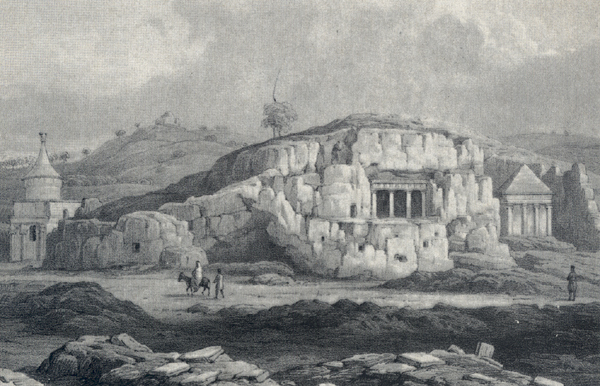Image Details

George Williams, The Holy City, 1849
Tombs in the Kidron Valley. Elaborate, rock-hewn burial chambers lie within a section of the Kidron Valley, bordering the Old City of Jerusalem, popularly called the Valley of Jehoshaphat. This view is to the east towards the Mount of Olives. The structure with the conical top (left) is commonly known as Absalom’s Tomb, though archaeologists date it to the early Roman period (first century B.C.), about 900 years after David’s son Absalom. Also misnamed are the “Tomb of St. James” (the columned opening to the right of center; the next drawing shows the view from the interior, looking towards the southeast corner of the wall surrounding the Temple Mount) and the “Tomb of Zechariah” (right). The “Tomb of St. James” is actually the late second-century B.C. tomb of the Bene Hezir family of priests, while the “Tomb of Zechariah” dates not to the time of the sixth-century B.C. prophet but to the first century A.D.
Sites such as these, despite what we know today about their date and who was buried in them, acted in centuries past as a magnet to attract devout pilgrims to the Holy Land.
